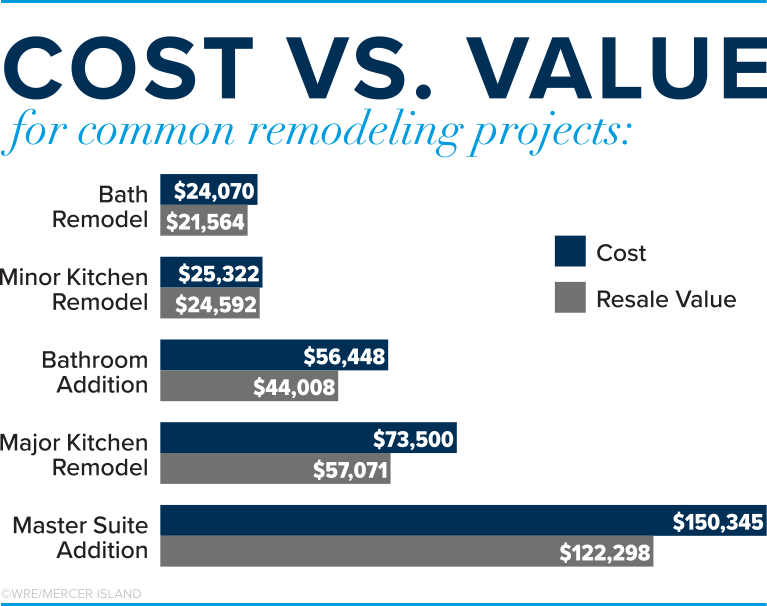Pro Lighting Tips to Brighten Your Home

As we approach the darkest days of the year, a few tweaks in your interior lighting scheme can brighten your home (and your mood) from the inside out. Here are some great tips from Real Simple for a lighting scheme that is flattering and functional…

- Use a combo of overhead and up lighting for a brilliant, flattering effect
- Include functional task lighting tailored to how the space is used—here are rules of thumb for wattage equivalents to use:
- Reading: 40-60 watts with minimal glare
- Work space: 60 watts max for a desk lamp, with additional soft lighting no brighter than the computer screen
- Makeup: 60-80 total watts of light (two 40-watt side sconces, or a few 25-watt vanity bulbs)
- Dimmer switches allow you to adapt lighting for multiple uses, while also saving energy and increasing bulb lifespans—newer smart plugs, switches and bulbs are an affordable and easy way to do it with added benefits like automation and color tuning

- Use a variety of upward glow for ambience + downward glow for reading
- Light three corners of the room and focus one of the lights on a beautiful object or chair
- Consider smart bulbs/plugs that allow you to adjust brightness and tone, especially if you also watch TV in this room

- Showcase the table with a chandelier or pendant placed 36-48 inches above its surface, with a max of 100 total wattage equivalent
- Avoid shadows on faces by choosing a fixture that is 1/2 to 3/4 the width of the table
- Supplement with more dim, indirect lighting such as table lamps, sconces, or battery powered votive candles

- Overhead lighting works best to illuminate work spaces—think pendants, recessed lighting, and under-cabinet lights
- Place pendants about 36-48 inches above the countertop, spaced evenly beginning 12-15 inches from either side of the island, peninsula, or table

- Position bedside lamps so that the bottom of the shade is 16-18 inches above the top of the mattress (a lamp that is 26-28 inches tall including the shade is usually a good bet)
- Soft and cozy is key–angle any bright directional lighting away from the bed, and add one or two small lamps with warm, dim bulbs for a candlelight feel
- Dimmers or smart bulbs work well here, too!

- Sidelights—such as sconces—are great for makeup and should ideally be about 36-40 inches apart to evenly light your face
- Position side fixtures about 60-65 inches up from the floor, or so that the bottom of the shades are just below eye level
- Overhead lights provide good additional illumination for showering or cleaning
- If your bathroom is large, consider a direct overhead light for the shower

We earn the trust and loyalty of our brokers and clients by doing real estate exceptionally well. The leader in our market, we deliver client-focused service in an authentic, collaborative, and transparent manner and with the unmatched knowledge and expertise that comes from decades of experience.
2737 77th Ave SE, Mercer Island, WA 98040 | (206) 232-0446
mercerisland@windermere.com
© Copyright 2021, Windermere Real Estate/Mercer Island.
Should I Move or Remodel?


There are a number of things that can trigger the decision to remodel or move to a new home. Perhaps you have outgrown your current space, you might be tired of struggling with ancient plumbing or wiring systems, or maybe your home just feels out of date. The question is: Should you stay or should you go? Choosing whether to remodel or move involves looking at a number of factors. Cost vs. value is a big consideration—check out the chart below or click here to view Remodeling Magazine’s full 2019 Cost vs. Value Report showing the cost and resale value of 21 projects in the Seattle area.

Here are some things to consider when making your decision…
FIVE REASONS TO MOVE:
1. Your current location just isn’t working.
Unruly neighbors, a miserable commute, or a less-than-desirable school district—these are factors you cannot change. If your current location is detracting from your overall quality of life, it’s time to consider moving. If you’re just ready for a change, that’s a good reason, too. Some people are simply tired of their old homes and want to move on.
2. Your home is already one of the nicest in the neighborhood.
Regardless of the improvements you might make, location largely limits the amount of money you can get for your home when you sell. A general rule of thumb for remodeling is to make sure that you don’t over-improve your home for the neighborhood. If your property is already the most valuable house on the block, additional upgrades usually won’t pay off in return on investment at selling time.
3. There is a good chance you will move soon anyway.
If your likelihood of moving in the next two years is high, remodeling probably isn’t your best choice. There’s no reason to go through the hassle and expense of remodeling and not be able to enjoy it. It may be better to move now to get the house you want.
4. You need to make too many improvements to meet your needs.
This is particularly an issue with growing families. What was cozy for a young couple may be totally inadequate when you add small children. Increasing the space to make your home workable may cost more than moving to another house. In addition, lot size, building codes, and neighborhood covenants may restrict what you can do. Once you’ve outlined the remodeling upgrades that you’d like, a real estate agent can help you determine what kind of home you could buy for the same investment.
5. You don’t like remodeling.
Remodeling is disruptive. It may be the inconvenience of loosing the use of a bathroom for a week, or it can mean moving out altogether for a couple of months. Remodeling also requires making a lot of decisions. You have to be able to visualize new walls and floor plans, decide how large you want windows to be, and where to situate doors. Then there is choosing from hundreds of flooring, countertop, and fixture options. Some people love this. If you’re not one of them, it is probably easier to buy a house that has the features you want already in place.
FIVE REASONS TO REMODEL:
1. You love your neighborhood.
You can walk to the park, you have lots of close friends nearby, and the guy at the espresso stand knows you by name. There are features of a neighborhood, whether it’s tree-lined streets or annual community celebrations, that you just can’t re-create somewhere else. If you love where you live, that’s a good reason to stay.
2. You like your current home’s floor plan.
The general layout of your home either works for you or it doesn’t. If you enjoy the configuration and overall feeling of your current home, there’s a good chance it can be turned into a dream home. The combination of special features you really value, such as morning sun or a special view, may be hard to replicate in a new home.
3. You’ve got a great yard.
Yards in older neighborhoods often have features you cannot find in newer developments, including large lots, mature trees, and established landscaping. Even if you find a new home with a large lot, it takes considerable time and expense to create a fully landscaped yard.
4. You can get exactly the home you want.
Remodeling allows you to create a home tailored exactly to your lifestyle. You have control over the look and feel of everything, from the color of the walls to the finish on the cabinets. Consider also that most people who buy a new home spend up to 30 percent of the value of their new house fixing it up the way they want.
5. It may make better financial sense.
In some cases, remodeling might be cheaper than selling. A contractor can give you an estimate of what it would cost to make the improvements you’re considering. A real estate agent can give you prices of comparable homes with those same features. But remember that while remodeling projects add to the value of your home, most don’t fully recover their costs when you sell.
ABOUT WINDERMERE MERCER ISLAND
We earn the trust and loyalty of our brokers and clients by doing real estate exceptionally well. The leader in our market, we deliver client-focused service in an authentic, collaborative and transparent manner and with the unmatched knowledge and expertise that comes from decades of experience.

© Copyright 2019, Windermere Real Estate/Mercer Island. Text originally posted on Windermere.com. Remodeling data © 2019 Hanley Wood Media Inc. Complete data from the Remodeling 2019 Cost vs. Value Report can be downloaded free at www.costvsvalue.com.
 Facebook
Facebook
 Twitter
Twitter
 Pinterest
Pinterest
 Copy Link
Copy Link